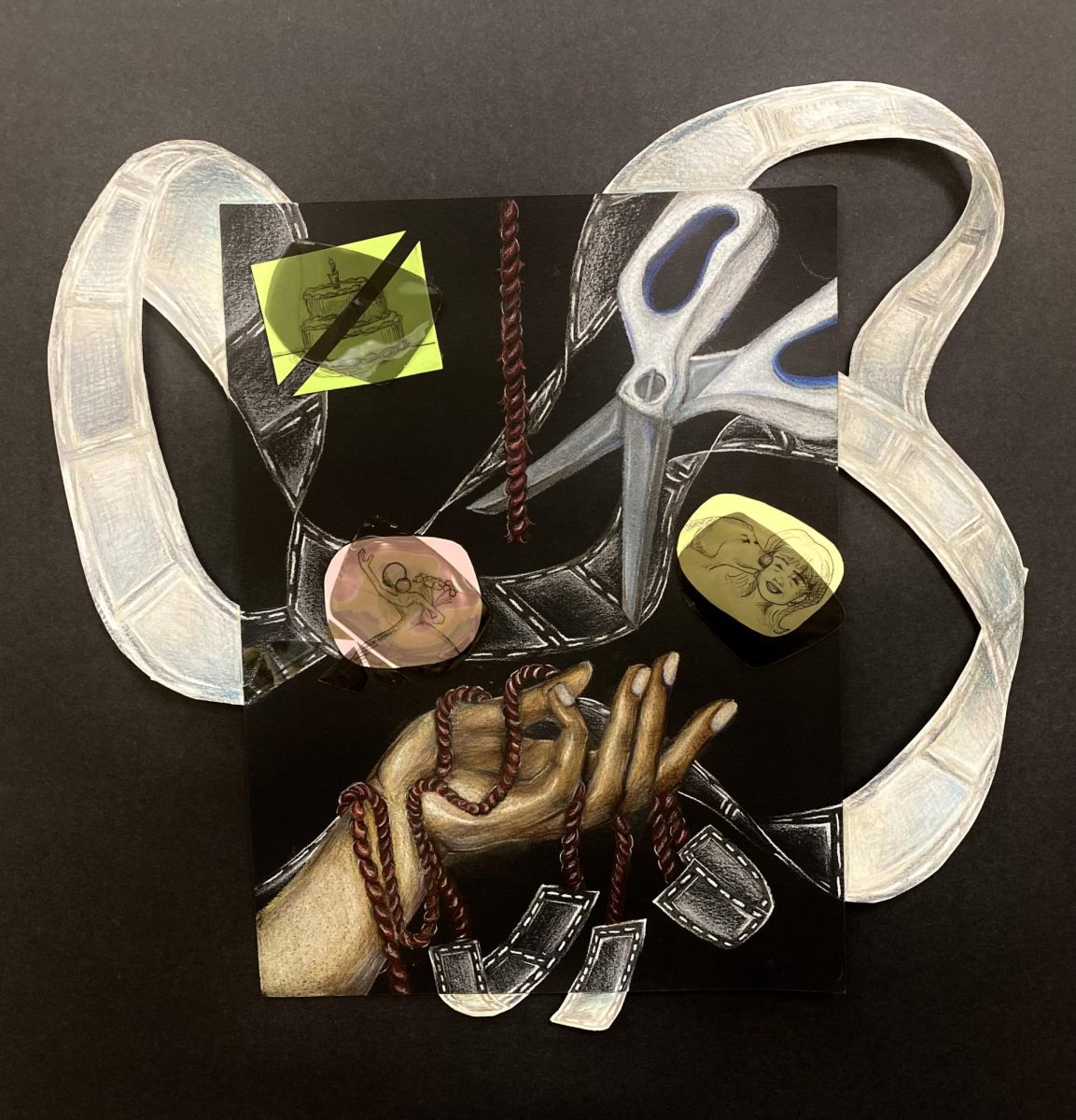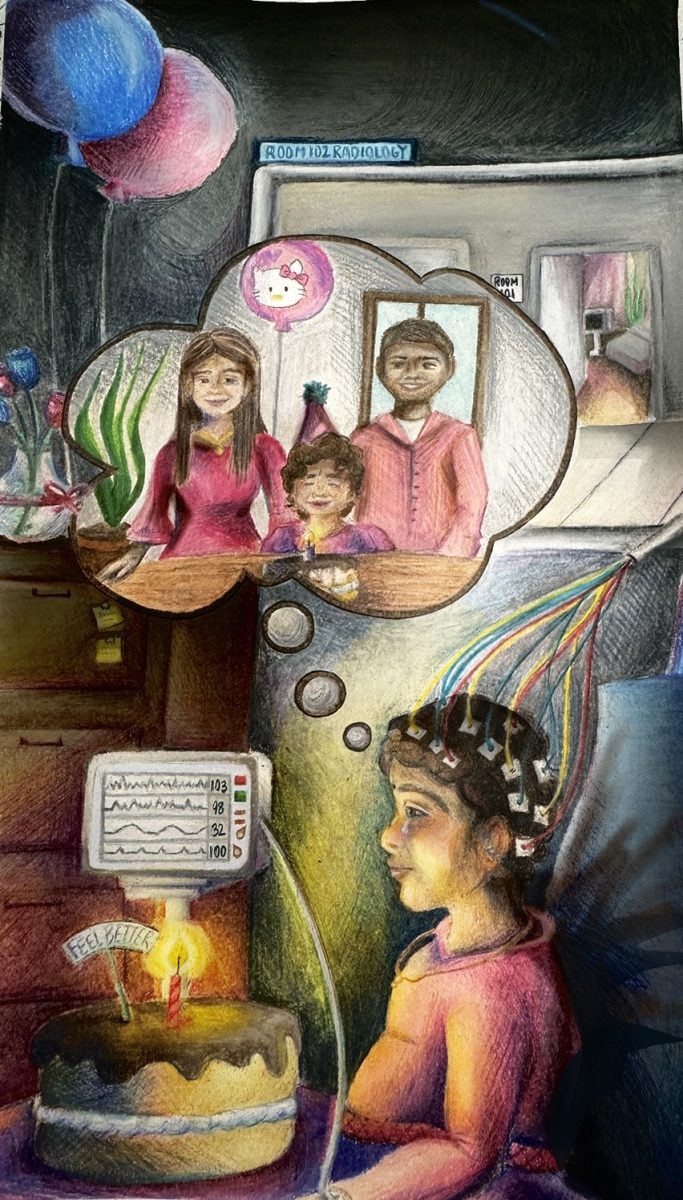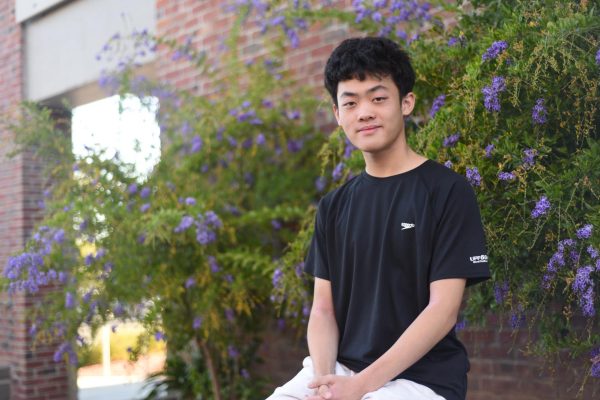Sophomore Tanisha Sood begins her piece by sketching a haunting scene from her memory — a sunless hospital room illuminated by a single, wavering candle. Her harsh strokes add depth to the page as she plays with cool and warm tones, confronting the emotions of her childhood experiences of seizures and lengthy hospital stays. Working on her portfolio for AP Art, Sood hopes to incorporate aspects of her personal life into her pieces and share her stories.
“I think having that freedom to understand yourself better when doing art was really one of the main reasons why I really started doing art and enjoyed it,” Sood said. “All of the art that I’m currently doing is about my personal stories, but I want it to be shared with the world so that people know that anything you’re dealing with can be helped through art, which is a way for you to relieve your emotions specifically.”
Many MVHS students have used their love of art as a way to improve aspects of their daily lives. Senior Justin Xin, who will pursue film and animation at the Rhode Island School of Design next year, has used his diverse art skills to create a more welcoming environment at MVHS. Xin takes inspiration from various places, from feelings of appreciation to the LED-illuminated streets of New York City, hoping to share the ideas that he finds interesting with others. One of the mediums he has used to express these aspects of his experience are whiteboards.
“I like making art that’s seen in public, not just so people can see my work but also just so people can enjoy better public spaces and just have things that look nice,” Xin said. “One of the more weird pieces of art I create are whiteboard drawings. I have, more or less, just vandalized random teachers’ whiteboards and put way too much effort into making pieces on that. It’s largely just for fun, but it definitely just makes classrooms feel more interesting to see — these otherwise empty whiteboards now have some random drawings on them.”
However, even people not working in the arts can still find a way to use art as a medium for self-expression. While MVHS alum ‘15 and Cupertino Arts and Culture Commissioner David Wang studied materials science at the Massachusetts Institute of Technology, he discovered the MIT Trashion Show, combining his knowledge of materials science with fashion by challenging participants to transform waste materials into fashionable items to be strutted on a runway. This field, known as material fashion, is an area that Wang participates in to showcase the creative parts of his identity.
“[Being] trained more as a scientific engineer, and I would say there’s a lot of structure around the normal work that I do,” Wang said. “But I think, as a person, as an individual, I’ve always really enjoyed making things. And I’ve always been seeking to have some sort of creative outlet. So, for me, fashion is that creative outlet.”
For Sood, shaping art into her own creative outlet means that instead of rushing through art or forcing a message into a piece, she allows her emotions to organically surface and translates them onto paper. She often takes inspiration from her present feelings or reflections on past experiences that have defined her life, which comes with struggles.
“In a piece that I’m working on, there are two comparisons of my birthday as a four-year-old versus a birthday as a 16-year-old,” Sood said. “I feel like some days certain emotions could just be bottled up in me. Art block happens to me a lot, but I think that whole aspect of just getting something on the paper and starting to draw — sometimes not even thinking about what your final result is going to be — is really helpful in terms of releasing my emotions. But there are obviously going to be days where I’m just like, ‘Uh, I don’t know what I’m doing.’”
This sentiment resonates with Xin , as he often finds his emotions affecting the process of creating art. He recalls actively exploring specific emotions to not only understand them better but also to make them more evident in his art.
“My art depends on how I’m feeling overall in life at that specific time,” Xin said. “For example, when I’m depressed, that definitely comes through in the types of ideas. I try to pursue it when I work.”
Similarly, Wang reflects on his emotions and hopes to convey them through art, notably through a collection that he’s been working on to commemorate the life of his mom, who passed away in 2018. One of the most memorable projects for Wang was working on his sister’s wedding dress, which he says was reflective of their close bond.
“At a more personal level and a more emotional level, it was just so meaningful because it was something that we worked on together,” Wang said. “And I really, really cherish my relationship with my sister. I think this was an example of furthering that intimate relationship with my sister. And obviously, I was very proud of how the final result turned out. It was probably the hardest that I’ve ever worked on a project.”
To increase exposure for artists, Wang, as a member of the Cupertino Arts and Culture Commission, creates new opportunities for students to discover how they can use art to better the community with ideas that are shaped by their unique experiences and identities. One recent initiative is the Arts and Culture Commission Artists Awards, which recognizes the talent of local artists. Ultimately, Xin recognizes the importance of initiatives like these to inspire change, having recently submitted an animation to the FUHSD Earth Day Art Contest to share his own unique perspective and proposed solutions on climate change. He believes that art is one of the most accessible, democratized experiences for students to engage in as a form of expression and platform to share their ideas.
“If you’re interested in art, don’t think there’s too many barriers,” Xin said. “Don’t think, ‘Oh, I can’t draw,’ or ‘Oh, I don’t have experience with this.’ Don’t let that stop you. Everyone starts out with no experience.”











